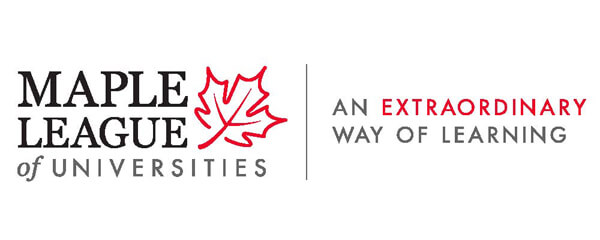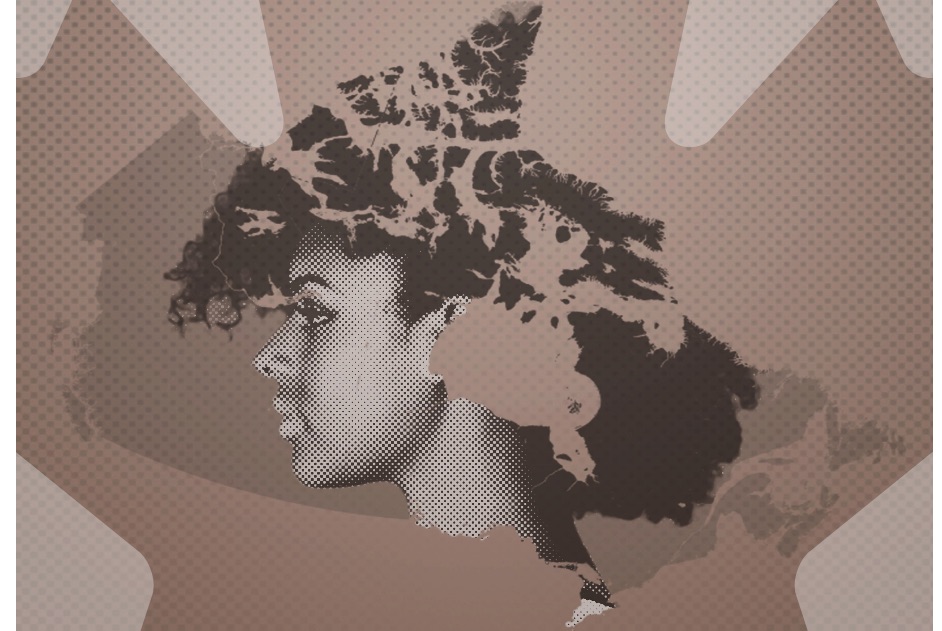Selecting a university is never easy. By the time Grade 12 rolls around, students are surrounded with applications, viewbooks, and guides pressuring them to choose the flashiest institution. It’s a game that’s gone on for decades, and the big names like McGill, Queen’s and UBC have consistently won. But there are new challengers in the ring.
The former U4 League, now known as the Maple League, has proven to be a viable alternative. Composed of four schools – Acadia, Mount Allison, St. FX, and Bishop’s – the Maple League is challenging larger schools sucking young minds out of the Maritimes and providing an education focused on hands on research, intensive participation, and student engagement.
Creating this association among small, primarily undergraduate schools is two-fold. First, it’s a brilliant marketing play. When these schools go into high schools to persuade students to apply, they present more than one choice for small schools in Atlantic Canada. They present four schools that are similar on the surface, being small town liberal arts schools, while offering incredible breadth and depth. This kind of marketing demonstrates to the rest of Canada that we present a different kind of education. Our model, which focuses on liberal arts and sciences, is mostly non-existent within Canada but plentiful in the United States. With recent political turmoil down south and the relatively inexpensive Canadian dollar, it is also an attempt to push into other markets and expand our business pool.
Secondly, they offer incredible opportunities to collaborate. Collaboration with other schools in the Maple League takes many forms. Little things, like Axe Radio sharing their programs with other schools in the Maple League, or big things, like working together on research projects are the hallmarks of the Maple League. Recently there was a talk given by former Prime Minister of Canada Paul Martin at St. FX and it was livestreamed to other Maple League schools. This past fall, Mount Allison made it possible to offer Greek courses to students at Bishop’s University in Lennoxville, Quebec. Here at Acadia a course on Genocide and Justice is being taught via livestream to other institutions within the Maple League. In order to make a successful team, one has to figure out how to work together. The Maple League was only established a few years ago (originally named the U4), and we’re still looking for our footing that will set us apart from all others.
Many think of the Ivy League as a similar institution. In reality, the Ivy League is just the name for an athletic conference that happens to encompass some of the wealthiest schools in the United States. Of course there’s an elitist, arrogant, and upper class connotation to the phrase ‘Ivy League.’ Looking beyond the social aspects that these schools share, their ability to collaborate through projects similar to what Axe Radio is doing is incredibly important. Cooperation through competition is what is necessary, especially in today’s day and age.
The Maple League offers something that many larger universities across Canada and the United States can’t: intimacy. The ability to sit in a class of 30 people and have your professor know your name is a privilege that students at McGill or the University of Toronto would gladly pay more (or less) for. I was once haphazardly talking to my parents during the break, both of whom are UBC graduates, about their days in undergrad. I mentioned how almost all of my professors knew my name and noticed if I wasn’t in class. Their facial expressions verged on pure amazement. When they were pursuing their education, they didn’t have that kind of intimacy. The most similar experience they could get was sitting at the front of the lecture hall of 500-1000 students, hoping that they would be able to raise their hand or ask the professor a fleeting question after the class ended.
The value in small institutions is priceless. Compared to larger schools where lecture halls are hundreds if not thousands of students, the student to faculty ratio at these schools is around 15:1. Having professors who know your name, who know you as a student, and who know you well enough to write reference letters is infinitely more valuable than going to a university with a big name but little personal connection. Small schools like the ones in the Maple League have consistently come in the top ten of Maclean’s primarily undergraduate university rankings, and maintain incredibly high student satisfaction and retention rates. That certainly speaks to the fact that there’s a reason to stay at these schools.
Some may say that these small schools haven’t produced the same calibre of alumni that bigger schools like Queen’s, Western, or Dalhousie have. Well, let’s take a look at that. Mount Allison has more Rhodes scholars per capita than any other university in Canada. Acadia has had members of the Irving family, as well as Alex Maclean and Charles Huggins (who won a Nobel Prize) pass through its doors. Bishop’s has housed several CFL players during their undergraduate careers, and St FX has educated former Prime Minister Brian Mulroney and several Maritime Premiers. If that isn’t enough alumni who have achieved greatness to persuade you to attend, who says you can’t?
At the launch of the Maple League, President Ray Ivany laid out some of the benefits of an education at any of this institutions: “In the upper-year courses at our schools, you are essentially a graduate student in your ability to do independent research,” he said. This strikes a chord with many students across the country, as an undergraduate degree is becoming more common and grad schools harder to get into. Having the opportunity to essentially be a grad student in your final years of undergrad prepares one to be that much more ready for the workforce, which is becoming increasingly more competitive every year.
There is a lot of promise for the Maple League. In addition to adding revenue to the four universities, it also brings students from across the continent to these institutions. Students from Bermuda, British Columbia, California, Nigeria, Scotland, and countless more places are crucial to these institutions. Not only are they exposed to the beautiful towns of Wolfville, Sackville, Antigonish, and Lennoxville, but they also begin to develop an attachment to their province. Outmigration deprives Nova Scotia of nearly $1.2 billion every year. Why? Simply, in the past, we haven’t had many students. With a multilateral approach facilitated by the Maple League we have the ability to draw students to these parts of Canada so they can fall in love and give back.
There will obviously be ups and downs in the Maple League’s progress. Each institution will play a crucial role in attracting students to invigorate the respective town, but working together through the Maple League will make it that much easier. Regardless of the university, Acadia, Mount Allison, St. FX, and Bishop’s all have so much to offer. They deliver on the promise of a solid liberal arts education and they provide the intimacy that so many larger schools lack. But if there’s one thing they do best, it’s that they ensure students aren’t just numbers. Students are the central focus of the institutions. They’re the poets, the scientists, the artists, the athletes, the singers, the mathematicians, the leaders, the writers, the activists, and the scholars that form the bedrock of each school. They are the future. The least these universities can do is help them make the best of it.
Colin Mitchell is a fourth year (Honours) Politics student and Editor-in-Chief of The Athenaeum




